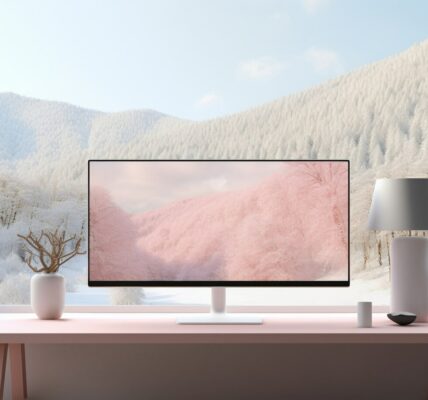What is AppVShNotify.exe? Is it safe or is it a virus? Should I disable it? AppVShNotify was created by Microsoft and is used by Microsoft Application Virtualization. The genuine AppVShNotify.exe file is a software component of Microsoft Application Virtualization (App-V) by Microsoft Corporation. AppVShNotif.exe can be found in Windows 10, 8, and 7.
AppVShNotifyis quite a common process this process whenever starts you can look at this on your taskbar. This executable file named appvshnotify.exe with the MS office 365 premium.AppVShNotif.exe can be found in Windows 10, 8, and 7. in C:\Program Files\Common Files\microsoft shared\ClickToRun.
Table of Contents
1 What is AppVShNotify and should I Disable it?
2 What is AppVShNotify?
3 Is AppVShNotify Malware
4 Should AppVShNotify be Disabled?
5 How to check if the File is Legit?
6 How To Remove Appvshnotify
7 Method 1: Uninstalling Using Application Manager
8 Method 2: Doing a Malware Scan
8.0.0.1 Recommended: Identify AppVShNotify.exe related errors
8.0.1 Some of AppVShNotify.exe errors include:
8.0.2 What is appvshnotify All Things About Appvshnotify
8.0.3 Is appvshnotify.exe Safe?
8.0.3.1 Note: THis is not MY video. just for helping users .
8.0.4 Final words
What is AppVShNotify and should I Disable it?
what-is-appvshnotify-and-should-i-disable-it
what-is-appvshnotify-and-should-i-disable-it
Microsoft Application Virtualization Client Shell Notifier. responsible for integrating a virtualized application.If AppVShNotif.exe is found anywhere else from C:\Program Files\Common Files\microsoft shared\ClickToRun, or you haven’t installed Microsoft Office then it may harm your pc and should scan your computer with antivirus or Malwarebytes.
What is AppVShNotify?
AppVShNotify is a exe file which is created by Microsoft with the authorization of Microsoft Application Virtualization. appvshnotify.exe which is approx 270-340MB, or else depends on the version that you have installed on your pc.
appnotify
AppVShNotify.exe
Is AppVShNotify Malware
There are many doubts regarding thisAppvshnotify and authenticity and reliability. I have researched and read a lot about this application. So, I am going to show you in this article about what exactly Appvshnotify is.This is a background service of Microsoft used acquired in 2006 named as “Softgrid”This is a global path “C:\Program Files\Microsoft Application Virtualization\Client\AppVShNotify.exe”.
Should AppVShNotify be Disabled?
AppVShNotify stands for Application Virtualization Shell Notify. The .exe means an executable file. Executable files sometimes can harm your computer. so before you remove, check about is it relating to Windows operating system or to a trusted path
How to check if the File is Legit?
If you want to You can view it by following options or Click to Run a Free Scan for AppVShNotify.exe related errors. We should always know that in any application Digital signatures from a verified publisher verify that an application is not malware.
Know more about VIOC POS Login at pos.vioc.com
Option 1: C:\Program Files\microsoft office 15\clientx64\integratedoffice.exe.
If you want to see this then the first option is the path named C:\Program Files\microsoft office 15\clientx64\integratedoffice.exe.
Option 2: Task manager
If you are not able t To get the exact location where this appvshnotify.exe process is running, then you can open the task manager.
Still not able to find the exact location, Then it is running in a background process that you can only see through the task manager of the windows.Appvshnotify.exe keeps a digital signature.
Note: AppVShNotify.exe has 263,896 bytes (25% of all occurrences), 273,200 bytes, and 12 more variants. https://www.file.net/process/appvshnotify.exe.html
The program has no visible windowBut the AppVShNotify.exe file comes with a digital signature.
How To Remove Appvshnotify
If you want to remove appvshnotify.exe from your system permanently because of some reasons and issue I will guide you step by step how to remove appvshnotify.exe from your pc.
Method 1: Uninstalling Using Application Manager
For removing appvshnotify.exe permanently from pc follow These steps here.
1) Go to window search bar and search for control panel .
2) You can find a option of uninstall a program You have to click on it.
AppVShNotify.exe
Image source appuals.com
3) In uninstall a program option you will see a file named Microsoft Office, Microsoft Office 365 Home Premium click on the file and then uninstall.
4) Click ok and after the complete process restart your pc .
At last, you can go to the taskbar to see That is it properly uninstalled or not.
AppVShNotify.exe
Image source appuals.com
Method 2: Doing a Malware Scan
Some of the external software application that comes with the feature to uninstall other application very easily.
1) Open Any web browser you use.
2) Download application of software uninstaller .
AppVShNotify.exe
Image source appuals.com
3) Install the application.
4) Complete the setup processes.
5) You can see the app icon go there.
6) You can see all files choose appvshnotify.exe program from the list of click uninstall button .
Check also TM Menards Login Portal details
Recommended: Identify AppVShNotify.exe related errors
Uninstalling this variant: You can uninstall the program Microsoft Corporation from software vendor for support. Click Windows Control Panel Then go to Software or Programs and uninstall it.If AppVShNotify.exeresides C:\Windows or C:\Windows\System32 folder then it may be a malware.
The .exe are executables files of Windows but this his extension file may destroy your system. Like we know that Sometimes when are using antivirus on our systems then, they may detect many .exe files that we can’t find in our pc corrupted .exe files that can harm your PC.
Read this Harman Kardon Onyx Studio 2 vs 3
Some of AppVShNotify.exe errors include:
AppVShNotify.exe – Bad Image.
AppVShNotify.exe Application Error.
AppVShNotify.exe could not be found.
AppVShNotify.exe could not be installed.
AppVShNotify.exe could not be launched. Class not registered.
AppVShNotify.exe could not be started.
AppVShNotify.exe failed to initialize properly.
AppVShNotify.exe has encountered a problem and needs to close. We are sorry for the inconvenience.
AppVShNotify.exe is not a valid Win32 application.
AppVShNotify.exe is not running.
Cannot find AppVShNotify.exe.
Error starting program: AppVShNotify.exe.
Faulting Application Path: AppVShNotify.exe.
The file AppVShNotify.exe is missing or corrupt.
Windows failed to start – AppVShNotify.exe.
What is appvshnotify All Things About Appvshnotify
File Location C:\Program Files\microsoft office 15\clientx64\integratedoffice.exe
Size 270-340 MB
Usage MS office 365 premium ad addons
Filename: appvshnotify.exe
Publisher: Microsoft Corporation
Product Name: Microsoft Application Virtualization
Description: Microsoft Application Virtualization Client Shell Notifier
Typical file path: C:\Program Files\microsoft office 15\clientx64\appvshnotify.exe
Certificate Issued to Microsoft Corporation
Authority (CA): Microsoft Corporation
Product Name: Microsoft Application Virtualization
Description: Microsoft Application Virtualization Client Shell Notifier
Is appvshnotify.exe Safe?
There are some points here I want to mention so that you don’t get confused about it
appvshnotify.exe contains a digital signature That means clearly it is safe
appvshnotify.exe comes with MS office files.
It came with third party authentication,
sometimes appvshnotify.exe does not show any process in the taskbar. S
20-25% chance of threat in my view
When you run an antivirus on the computer you can see it there is your own choice to remove appvshnotify.exe or not
Note: THis is not MY video. just for helping users .
Check information about Ksu D2l Login (d2l.kennesaw.edu)
Final words
This appvshnotify.exe executable files are creating any problems then. You can get rid of it by just uninstalling it hope this article helped to answer your query.





